.jpg)
Ticks & Disease in Florida
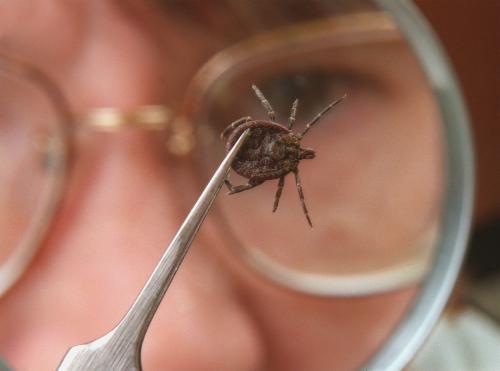
Ticks can be found throughout the year in Florida, but there are seasonal differences in the abundance of nymphs and adults. Ticks in either stage can transmit any diseases they carry, so quick removal of ticks and prevention of tick bites are both important. There can be an increased risk of disease from nymphs because they are often small enough to avoid being noticed.
Tick Types
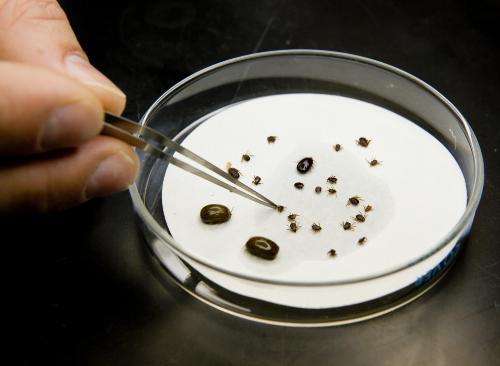
Brown Dog Tick
The brown dog tick feeds mainly on dogs and is usually found in areas where dogs frequent. The Centers for Disease Control and Prevention (CDC) has recently identified the brown dog tick as a vector for Rocky Mountain spotted fever (RMSF) in the southwestern United States and along the Mexican border.
American Dog Tick
American dog ticks are usually found on dogs, but they will also attach to other mammals and humans. Unlike the brown tick, it is typically an outdoor tick, not a household pest. This tick can carry RMSF.
Nymphs feed on rodents, but adults will attach to humans. Adults are abundant from March through September.
American dog ticks can also cause paralysis in dogs and children when the ticks attach to the base of the skull or the spinal column. Paralysis is caused by a toxic secretion. Recovery usually occurs within 24 hours of removing the tick.
Lone Star Tick
The lone star is the most common human-biting tick in Florida and easily recognizable. Females have a light-colored dot on their back. Lone star ticks carry and transmit ehrlichiosis and southern tick-associated rash illness (STARI).
Nymphs occur between February and October; adults occur April through August with a peak in July.
Gulf Coast Tick
This tick is prevalent in southeastern states. It looks similar to the American dog tick but has larger mouthparts. Gulf Coast ticks transmit a less severe RMSF relative, Rickettsia parkeri.
Nymphs are found in early spring (January to March), and adults from March through September. Adults are commonly found on the ears of large mammals, such as cattle.
Black-Legged Tick
The black-legged tick (or deer tick) is mostly known as the carrier of Lyme disease. Black-legged ticks also carry babesiosis and HGA (human granulocytic anaplasmosis).
Nymphs are found April through August. Adults are common throughout the winter (September through May).
Prevention and Control
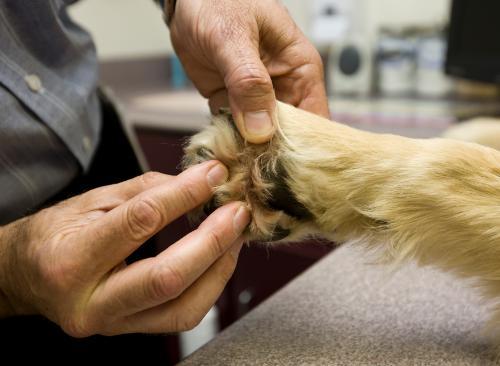
Ticks must feed for several hours to transmit disease organisms, so quick identification and removal help reduce tick-borne disease. To remove a tick, grasp it on its mouthparts with tweezers and pull it straight out with firm pressure.
To avoid tick bites and diseases:
- Remove ticks from pets and people as soon as noticed.
- In tick-infested areas, keep clothing buttoned and tucked in, including placing pants inside boots.
- Wear light-colored clothing to easily spot ticks.
- Apply repellents to uncovered skin.
- Avoid touching plants in tick-infested areas.
- Check for ticks after frequenting tick-infested areas.
- If you live in wooded areas, check for ticks daily.
- Clear brush along pathways and frequented areas.
- Landscape for tick-free zones. Consult with your local Extension agent for management tips.
Diseases
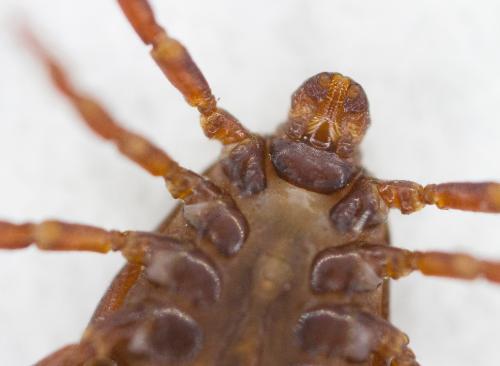
Several tick diseases are present in Florida, and others can be contracted during travel.
If you are bitten by a tick and become ill, contact your physician. Depending on the disease and individual reactions, it may take several weeks for symptoms to appear.
Rocky Mountain Spotted Fever
Rocky Mountain spotted fever is considered the most severe tick-borne disease in the US, with a high mortality rate among untreated cases. RMSF has a disease presence in Florida, with the number of cases increasing in the summer months. The American dog tick is the main transmitter in Florida.
Symptoms:
- red, spotted rash after onset of fever; vomiting; headache; lack of appetite; and muscle aches.
Rickettsia parkeri
The Gulf Coast tick transmits Rickettsia parkeri, a RMSF relative; the lone star tick may be another vector. R. parkeri may be misdiagnosed as RMSF. Unlike RMSF, R. parkeri will cause the bite site to resemble a sore or pimple.
Symptoms:
- inoculation eschar (sore), fever, fatigues, headaches, muscle pain, and general rash.
Rocky Mountain Spotted Fever
Rocky Mountain spotted fever is considered the most severe tick-borne disease in the US, with a high mortality rate among untreated cases. RMSF has a disease presence in Florida, with the number of cases increasing in the summer months. The American dog tick is the main transmitter in Florida.
Symptoms:
- red, spotted rash after onset of fever; vomiting; headache; lack of appetite; and muscle aches.
Southern Tick-Associated Rash Illness (STARI)
STARI is a Lyme-like disease transmitted by the lone star tick. STARI differs from Lyme disease in that chronic symptoms (e.g., arthritis, neurological symptoms) likely do not occur.
Symptoms:
- “bull’s eye” rash (erythema migraines), fatigue, fever, headache, and muscle and joint pain.
Lyme Disease
Lyme DiseaseFewer cases of lyme disease occur in Florida than in the northeastern US. In 2010, 56 confirmed cases were reported in Florida, compared with 4000+ in many northeastern states (CDC statistics). This is mainly attributed to two factors:
- Tick population life cycles are different in Florida compared to northern states.
- Black-legged ticks feed on Florida’s large population of reptiles and lizards, which are not reservoirs for the disease.
Of the Lyme disease cases reported from 1999-2008, 30% were acquired in Florida.
Symptoms:
- “Bull’s eye” rash, fever, headaches, chills, fatigue, and stiff neck or muscle aches. Late-stage symptoms may not appear until months or years after the bite.
The rash only appears in 60%–80% of Lyme cases and may not be at the bite site.
Ehrlichiosis and Anaplasmosis
Ehrlichiosis (HME) and anaplasmosis (HGA) are transmitted by the lone star tick and black-legged tick, respectively. Most HGA cases are acquired outside of Florida. These diseases are difficult to diagnose because the symptoms are similar to other diseases.
Symptoms:
- Fever, headache, fatigue, muscle aches, nausea, joint pain, diarrhea, and confusion.
Babesiosis
Babesiosis is not considered a significant issue in Florida and the disease is not currently reportable. It is transmitted by black-legged ticks. Infections are thought to be asymptomatic. Those who do get symptoms experience fever, headache, and muscle weakness.
Adapted and excerpted from:
P. Koehler and F. Oi Ticks (Family Ixoididae) (ENY-206), Entomology and Nematology Department (rev. 02/2017).
“Tick-Borne Disease in Florida,” Florida Department of Health (rev. 08/2012).
FAMILY RESOURCES
- Disaster Prep and Recovery
- Disease Prevention and Management
- Families & Consumers
- Family Time
- Health and Nutrition
- Health and Nutrition for Children
- Health Care
- Pest Control
RESOURCES
UF/IFAS Sites
- Department of Family, Youth and Community Sciences
- Expanded Food & Nutrition Education Program (EFNEP)
- Family Nutrition Program (FNP)
- Food Science and Human Nutrition Department
- Health in a Heartbeat
UF/IFAS Publications
- Aging and Caregiving
- Children, Elders and Family
- Community Development
- Eating Well
- Food Safety in the Home
- Health and Nutrition
- Housing and Home Environment
- Money Matters
- Parenting
- Relationships
State & Federal Agencies

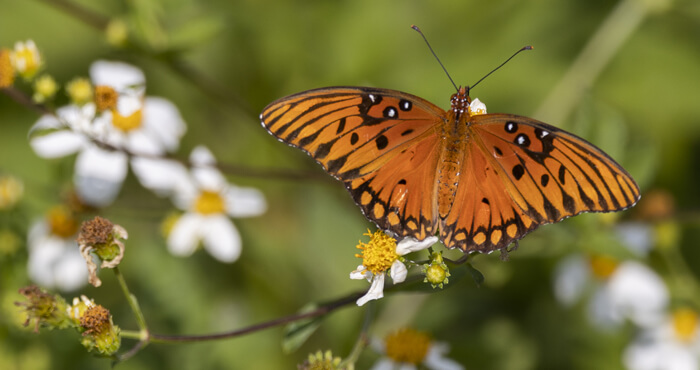
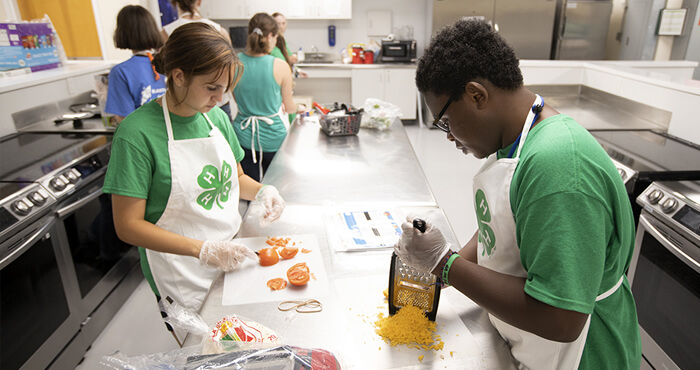
.jpg)

.jpg)